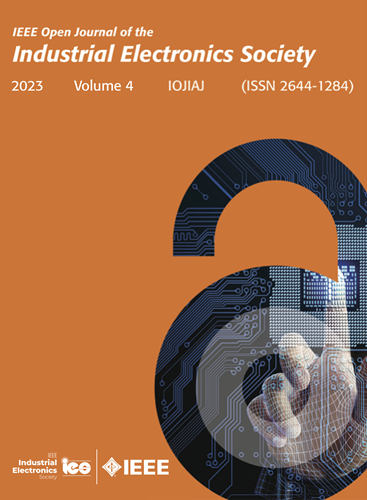利用单个多功能传感器进行全波加速度测量的自适应能量自主集成系统
IF 7.2
1区 工程技术
Q1 AUTOMATION & CONTROL SYSTEMS
引用次数: 0
摘要
自供电传感器为许多应用提供了长期监测的有效解决方案。由于收割机和传感器是独立设计的,没有考虑合作,因此在路径上的障碍是收获功率和所需功率的常见不匹配。本文提出了一种能量自主集成系统(EAIS),该系统可以在不需要外部电源的情况下无线采集和传输振动信号。该系统采用压电悬臂梁,既能收集能量又能感知加速度,集成了两个电路子系统:能量收集子系统和加速度感知子系统。采用自适应时分复用策略,使两个子系统能够以能量自给的方式交替工作。加速度传感子系统采用智能专用电路设计,能够采集具有复杂频率成分的全波加速度信号,这是自供电传感研究的一大进步。特别是,整个系统是完全能量自主的,具有自启动、自供电和自感知能力。本文章由计算机程序翻译,如有差异,请以英文原文为准。
Self-Adaptive Energy-Autonomous Integrated System for Full-Wave Acceleration Measurement with Single Multifunction Transducer
Self-power sensors provide an effective solution of long-term monitoring for many applications. An obstacle in the path is the common mismatching of the harvested power and the required power since the harvester and the sensor are independently designed without cooperative consideration. This article proposes an energy-autonomous integrated system (EAIS) designed to wirelessly acquire and transmit vibration signals without the need for an external power source. The system employs a piezoelectric cantilever that both harvests energy and senses acceleration, integrating two circuit subsystems: the energy harvesting subsystem and the acceleration sensing subsystem. A self-adaptive time-division multiplexing strategy is adopted for the two subsystems so that they can work alternatively in an energy-self-sufficient way. By utilization of a smart and dedicated circuit design, the acceleration sensing subsystem is capable of acquiring full-wave acceleration signals with complicated frequency components, which is considered as a great advancement in self-powered sensing studies. In particular, the entire system is fully energy-autonomous with the capability of self-starting, self-powering and self-sensing.
求助全文
通过发布文献求助,成功后即可免费获取论文全文。
去求助
来源期刊

IEEE Transactions on Industrial Electronics
工程技术-工程:电子与电气
CiteScore
16.80
自引率
9.10%
发文量
1396
审稿时长
6.3 months
期刊介绍:
Journal Name: IEEE Transactions on Industrial Electronics
Publication Frequency: Monthly
Scope:
The scope of IEEE Transactions on Industrial Electronics encompasses the following areas:
Applications of electronics, controls, and communications in industrial and manufacturing systems and processes.
Power electronics and drive control techniques.
System control and signal processing.
Fault detection and diagnosis.
Power systems.
Instrumentation, measurement, and testing.
Modeling and simulation.
Motion control.
Robotics.
Sensors and actuators.
Implementation of neural networks, fuzzy logic, and artificial intelligence in industrial systems.
Factory automation.
Communication and computer networks.
 求助内容:
求助内容: 应助结果提醒方式:
应助结果提醒方式:


